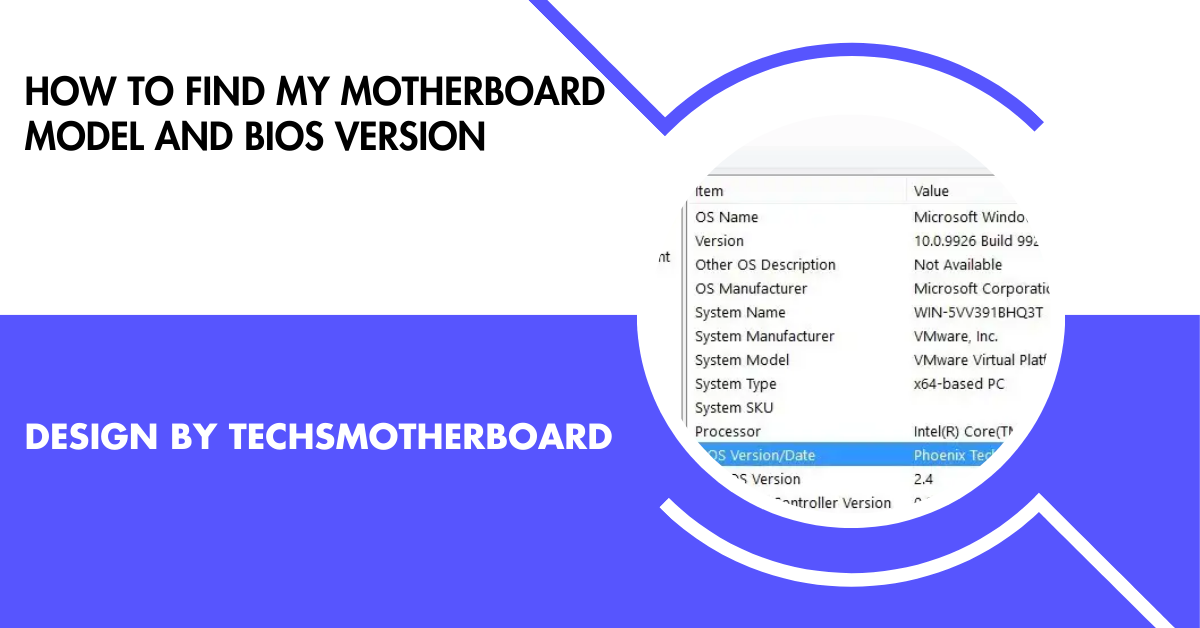Tech
Understanding Lie Detector Test Reviews: Truth Behind the Technology

Introduction: The Curious World of Lie Detector Tests
The concept of detecting lies has fascinated humanity for centuries. From ancient methods like trial by ordeal to modern polygraph examinations, the desire to unveil deception has led to the development of intricate technologies. Today, lie detector tests, officially known as polygraphs, are widely used in criminal investigations, employment screenings, and even relationship counseling. But how reliable are these tests? With a growing number of reviews and firsthand experiences available online, it becomes imperative to dissect what real users, scientific studies, and experts say about lie detector tests. This article delves deep into lie detector test reviews, exploring their effectiveness, limitations, user satisfaction, and ethical implications to provide a comprehensive and balanced perspective.
How Lie Detector Tests Work: Science Behind the Scenes
At its core, a lie detector test measures physiological responses that are believed to be associated with deception. When an individual lies, it is theorized that their body undergoes subtle changes due to stress or anxiety. A polygraph machine records indicators such as heart rate, blood pressure, respiratory rate, and skin conductivity (sweat gland activity). During a typical test, the subject is asked a series of baseline questions to establish normal physiological responses before moving on to relevant questions where deceptive answers are anticipated.
The examiner then analyzes the data, looking for physiological spikes that deviate from the established baseline. However, critics argue that these physiological changes do not exclusively indicate lying — they could be triggered by nervousness, fear, confusion, or even anger. Scientific reviews consistently emphasize that the polygraph is better at detecting emotional arousal rather than pinpointing dishonesty with precision. Consequently, while some people swear by its accuracy, others regard it with skepticism, leading to polarized reviews across different platforms.
Positive Reviews: Success Stories and High Satisfaction Rates
Among users who have had favorable experiences with lie detector tests, certain themes recur: peace of mind, relationship resolution, and successful criminal investigations. Many positive reviews highlight how lie detector tests have helped couples rebuild trust after allegations of infidelity. In these cases, test-takers often feel vindicated when they pass the polygraph, while their partners feel reassured by the process and results.
Another common source of praise comes from employers and government agencies who have used polygraphs during background checks. They argue that lie detector tests act as a deterrent against hiring individuals who might conceal critical information or who may pose security risks. Law enforcement officers and federal agencies like the FBI and CIA have reported that polygraph testing has, in some instances, provided valuable leads or cleared individuals from suspicion.
In online reviews, words like “reliable,” “effective,” and “life-changing” often accompany positive testimonies. However, it is important to note that satisfied customers are typically those whose expectations aligned with the polygraph’s capabilities and who trusted the skill and neutrality of the examiner conducting the test.
Critical Reviews: Skepticism and Allegations of Inaccuracy
Despite positive accounts, a significant body of reviews casts doubt on the reliability and ethical use of lie detector tests. Critics argue that polygraph tests are highly susceptible to errors and examiner bias. Negative reviews often tell harrowing stories of people who were falsely accused or failed the test despite telling the truth. These individuals emphasize that their anxiety about the testing process itself was misinterpreted as deceit, leading to devastating consequences in their personal or professional lives.
Scientific studies back up these concerns. According to a report by the National Academy of Sciences, the polygraph has an accuracy rate ranging from 70% to 90% under ideal conditions — meaning that there is still a substantial margin of error. False positives (truth-tellers wrongly judged as liars) and false negatives (liars judged as truth-tellers) are both serious concerns. In particular, the review highlighted that skilled deceivers or sociopaths could sometimes pass the polygraph test effortlessly, while nervous but honest individuals could fail.
Moreover, some reviews claim that polygraph tests can be manipulated. There are widespread discussions on online forums about “countermeasures,” such as controlled breathing, mental arithmetic, or physical discomfort techniques (like biting the tongue) used to try and skew test results. Although professional examiners are trained to spot such tactics, their effectiveness remains a controversial topic.
Factors Influencing Lie Detector Test Outcomes
Numerous variables affect the accuracy and perception of a lie detector test. Firstly, the experience and professionalism of the examiner play a crucial role. An unskilled or biased examiner can frame questions in ways that confuse the subject or misinterpret physiological data. Reviews repeatedly stress the importance of choosing a certified and reputable polygraph examiner, preferably one accredited by organizations such as the American Polygraph Association (APA).
Secondly, the test environment is significant. An intimidating setting can induce stress responses unrelated to deception. Comfort, privacy, and clear communication are essential to ensure the subject’s physiological data is as natural as possible. Some reviewers suggest that mobile lie detector services — which bring equipment to a more familiar environment like one’s home — produce more accurate outcomes compared to tests conducted in cold, clinical offices.
Finally, the psychological state of the subject matters immensely. Pre-test anxiety, fear of consequences, or distrust of the examiner can all skew results. Psychological evaluations prior to polygraph testing are rare but could theoretically improve accuracy by helping to filter out those whose extreme anxiety might compromise test results.
Lie Detector Tests in Different Contexts: A Mixed Bag
When evaluating lie detector test reviews, it’s helpful to distinguish between different use cases, as satisfaction and reliability rates vary dramatically depending on the context.
In criminal investigations, polygraphs are generally used as an investigative tool rather than as admissible evidence in court. Reviews from law enforcement suggest that while the tests can prompt confessions or generate leads, they are far from foolproof and are always supplemented with additional evidence gathering.
In corporate settings, lie detector tests during hiring processes have a mixed reputation. While federal law in the United States (through the Employee Polygraph Protection Act) limits most private employers from using polygraphs for employment screening, exceptions exist for security firms and government contractors. In these environments, reviews often mention increased security and peace of mind, but also note the potential for talented candidates to be unfairly rejected due to questionable polygraph results.
In personal relationships, lie detector tests are typically seen as a last-ditch effort to salvage trust. Reviews suggest that even when the results are favorable, the underlying issues of distrust often remain, meaning that while polygraphs can provide temporary reassurance, they are rarely a substitute for deeper relational work like counseling or therapy.
Ethical Considerations and Future of Lie Detection
Ethical concerns surrounding polygraph use are a recurring theme in reviews and scholarly critiques. Critics argue that the tests can infringe on privacy, foster coercion, and create undue psychological pressure on test-takers. Particularly troubling are accounts where polygraphs have been used as part of aggressive interrogation tactics, sometimes leading to false confessions or emotional trauma.
There is also the question of informed consent. Some reviews mention that subjects felt pressured into taking the test without fully understanding their rights or the implications of the results. Clear communication about the voluntary nature of polygraph testing and the limitations of its accuracy is vital for ethical practice.
Looking ahead, the future of lie detection may lie beyond traditional polygraphs. Emerging technologies such as fMRI brain scans, voice stress analysis, and even AI-driven behavioral analysis promise new ways to detect deception with potentially higher accuracy. However, these methods bring their own ethical and scientific challenges, suggesting that the debate over the best way to uncover the truth is far from over.
Conclusion: Should You Trust Lie Detector Test Reviews?
Lie detector tests occupy a complex space between science, psychology, and human emotion. Reviews of polygraph tests reveal a landscape filled with both remarkable success stories and heartbreaking failures. While some individuals have found closure, vindication, and justice through polygraph testing, others have suffered from its inaccuracies and the stigma of false failure.
Ultimately, whether a lie detector test is useful or harmful depends largely on the context in which it is used, the expectations of those involved, and the professionalism of the examiner administering the test. While polygraph technology has come a long way, it remains an imperfect tool — a powerful supplement to, but not a substitute for, thorough investigation, critical thinking, and human judgment.
If you are considering a lie detector test, it’s essential to weigh both the positive and negative reviews, understand the limitations of the technology, and consult with a reputable examiner. Truth, after all, is not always as simple as a graph on a machine — and sometimes, finding it requires far more than wires, sensors, and good intentions. Merchants Court, 2-12 Lord St, Liverpool L2 1TS, United Kingdom
Tech
How Do You Get Started with Digital Marketing as a Solo Beauty Entrepreneur?

Beauty has changed immensely since the last decade, and independent business people have created successful brands from kitchen tables and bedrooms. The marketing platforms of the internet have levelled the marketing field, enabling solo beauty entrepreneurs to connect with thousands of potential customers outside of conventional advertising budgets. The challenge of the online marketing space feels daunting, however, if you’re handling every step of the business by yourself.
Not only does online marketing help owners of beauty corporations, it’s necessary. Your potential customers are perusing Instagram, reading Google review posts of products, and finding new products through YouTube how-to video content. If you’re not strong online, you’re actually invisible to the people who would adore your products.
Understanding Your Brand Foundation
You require strong brand foundations prior to marketing strategies. Your unique selling proposition, the USP, becomes the thing that distinguishes your cosmetics from the plethora of others available out there online. Maybe you develop vegan lip colours with never-been-seen-before staying power, or your cosmetics line uses British botanicals that are home-grown. Whatever it ends up being, it must be a unifying strand through all of the content developed.
Even more relevant, though, is understanding your customer beyond demographics. It’s fine to know your buyer is a 25-40-year-old female, but more than that. How do they take care of their skin? Which beauty gurus do they follow? Do they desire high-end packaging, or do they desire sustainability the most? These facts will make your overall marketing plan.
Beauty Industry Social Media Marketing
Social media marketing remains at the heart of the online strategies of the most successful beauty companies. The go-to platform for beauty entrepreneurs remains Instagram, whose visuals-first mindset translates seamlessly to sharing products, tutorials, and behind-the-scenes insights.
Your content must walk the line between selling products and high-valued beauty education. Share application tutorials, ingredient spotlights, and candid conversations about popular areas of beauty concerns. Consumer content in the beauty industry is incredibly strong—as much as possible, encourage customers to post their results of using your products/services through a branded hashtag.
What people do, rather than how much of, really matter. Respond to comments, ask questions in your posts, and make polls and tests in your Stories. Making actual relationships with people make casual fans repeat customers who actually recommend your brand.
Search Engine Optimization Fundamentals
SEO puts your beauty company in the eyes of the potential clients at the exact moment they’re searching for solutions. Do some investigation of the related keywords of your special products and possible customers. Google Keyword Planner can be used to observe how individuals search the internet for products similar to yours.
On-page optimization simply means the intentional use of these words in your website content, your products descriptions, and blog posts. If you’re selling organic face oils, make sure your products pages include related words such as “natural skincare”, “organic face oil”, and the name of specific ingredients.
Link building, even if challenging for newly-started business ventures, can do wonders for your search rankings. Network among beauty bloggers, participate in the related online forums, and utilize guest blogging for the popular beauty websites to attain good backlinks. You can also work with King Kong and other leaders to get a boost in this regard.
Content Marketing That Works
Content marketing allows you to demonstrate your expertise as you build trust among potential customers. Ongoing blog posts addressing common beauty concerns, how-to advice used seasonally, or ingredient descriptions make your brand a knowledgeable authority.
Video does extremely well in the beauty sector. Create how-to vids of how to use your products, discuss how you create, or tell the story of your startup background. Simple phone vids can be extremely persuasive to individuals craving to be authentic, as compared to high-production values.
Establishing Your Digital Marketing Foundation
Successful online marketing involves frequency and patience, not perfection. Do it at a single location where your prospective customers exist, create content of value at regular frequencies, and slowly increase the sites as you feel more comfortable and as results can be monitored.
Keep in mind, online marketing is a marathon, not a sprint. Establish actual relationships with the clients, and the selling becomes the natural result.
Tech
Time Tracking Software is Essential for Most Startups
Startup operations can be exciting, surprising, and even quite chaotic, like a rollercoaster ride. It is easy to lose track of the hours when working on balancing operations, marketing, and product development. That is where time-tracking software comes in handy; it’s not about tracking hours; it also helps you understand how your team spends time, and that is its biggest strength.
I underestimated the difficulties of managing time when I first thought about my startup.
As I juggled several roles—CEO, marketing, developer, and project manager—while my productivity declined, the reality set in. I discovered that I was squandering hours on tasks that could be automated through manual tracking. My workflow was completely changed by implementing Controlio software, which allowed me to focus again and get rid of busywork.
Understanding where work goes is essential for startup success for both team leaders and single founders. This article explains the importance of time monitoring software and how to pick the best option.
The Need for Time Tracking Software in Startups
Visibility of Resource Investment
Time tracking shows the contributions of team members. In the absence of it, inefficiencies are overlooked until it is too late.
Our development team at my startup was plagued by missing deadlines. After we implemented time tracking, we realized there were too many hours of meetings and admin time spent when that could have been used on foundation building.
Precise Scheduling and Budgeting
Startups don’t have much money. Future forecasts are improved by time data from previous projects, avoiding irrational claims. For instance, a project that was supposed to take 100 hours ended up taking 120. This realization improved our planning for the future.
More Effective Use of Time
It is applicable to the Pareto Principle: Usually, 20% of work yields 80% of the results. We were able to renegotiate terms after using time tracking to discover a client that was using 30% of our time but only generating 10% of our revenue.
Simple and Easy Invoicing
Accurate tracking guarantees reasonable client rates for startups that bill on an hourly basis. Invoicing is made easy and client trust is increased by integration with CRMs (such as AllProWebTools’ system).
Monitoring Activities in Real Time
Manual tracking is replaced by automated reports, emphasizing:
- Durations of tasks
- Possible bottlenecks
- Opportunities for training
- For more detailed information, some tools even integrate with Jira.
Accurate Billing for Clients
Errors in timekeeping can have significant financial consequences. Overcharging or undercharging—such as when a designer logs 11 hours rather than 10—is avoided with automated tracking.
An advantage over competitors
Productivity improvement is essential in rapidly evolving startup environments. Time tracking makes it possible to
Quicker iteration
Flexible product introductions
Quick reactions from the market
Selecting Appropriate Time Monitoring Software
With so many choices, give priority to:
Why It Matters for This Feature
For instance
Usability
Assures team acceptance
The user-friendly dashboards of Controlio
Integration synchronizes with current tools (Jira/CRM)
Smooth workflow integrations
Usability
satisfies initial requirements (reports and invoices)
Features for tracking that can be customized
Cost-effective startup prices
Scalable tiers or free trials
With its extensive feature set for expanding teams, Controlio stands out as one of the best employee time tracking apps in 2025.
In Conclusion
For entrepreneurs, time tracking software is a strategic asset that serves as more than just a logging tool. The advantages are obvious, ranging from competitive advantages to resource optimization. Small teams may begin by hand, but effective scaling calls for tools like Controlio’s productivity software. Take the risk: sign up for a free trial and use every minute to advance your startup.
Tech
Cybersecurity Challenges for DigitalWallet Providers in 2025

As digital payment solutions become the preferred mode of transaction globally, digital wallets are emerging as one of the most crucial tools in personal and commercial finance. From e-commerce to peer-to-peer transfers, digital wallets simplify how consumers interact with money. However, this convenience comes with an expanding attack surface. In 2025, as digital wallet adoption continues to rise, so too do the cybersecurity challenges that threaten their reliability and trustworthiness.
In this rapidly evolving digital landscape, even specialized financial institutions such as a crypto prop firm are facing increasing pressure to bolster cybersecurity across all transaction endpoints, including wallet interfaces, APIs, and mobile applications. The threats are more sophisticated, the targets more lucrative, and the stakes higher than ever.
1. Advanced Phishing and Social Engineering Attacks
Phishing has long been a threat in the cybersecurity world, but in 2025, attackers are employing AI-generated phishing content, deepfakes, and real-time manipulation techniques. Digital wallet users are especially vulnerable due to the real-time nature of transactions. With just a convincing fake notification or phone call, bad actors can trick users into disclosing credentials or authorizing malicious payments.
Even biometric verification, often seen as a more secure method, isn’t immune. Fraudsters are now using AI-generated facial or voice data to fool facial recognition or voice authentication systems.
2. API Vulnerabilities and Integration Risks
Digital wallets are rarely standalone tools; they are connected to various third-party applications, e-commerce platforms, and banking services via APIs. This interconnectedness introduces multiple entry points for cyberattacks. Insecure APIs can allow hackers to extract data, manipulate transactions, or initiate unauthorized transfers.
Moreover, as wallet services expand to include cryptocurrency, cross-border payments, and real-time settlements, the number of API calls and connections increases—each one needing strong security protocols and constant monitoring.
3. Data Privacy and Regulatory Compliance
2025 has seen an uptick in data privacy regulations worldwide, with more stringent requirements from regions like the EU, North America, and Southeast Asia. Digital wallet providers must not only encrypt user data but also ensure complete compliance with varying local and international data protection laws.
Failure to comply may not only result in financial penalties but also reputational damage. More importantly, wallets often store both personal identity information and financial data, making them prime targets for hackers aiming to commit identity theft or financial fraud.
4. Rise of Zero-Day Exploits
Zero-day vulnerabilities—security flaws unknown to the software vendor—are becoming more prevalent and more dangerous. Cybercriminals are now using AI to detect and exploit these flaws before vendors can patch them. A successful zero-day attack on a digital wallet platform could lead to mass data leaks, fund thefts, or denial-of-service (DoS) attacks.
Given that many digital wallets are hosted in the cloud, attackers are also targeting shared infrastructures and containerized environments, which, if compromised, can affect multiple applications simultaneously.
5. Mobile Device Security
Most digital wallets operate primarily on mobile devices, and in 2025, attackers have developed sophisticated tools to exploit mobile OS vulnerabilities. Malicious apps, hidden malware, screen overlay attacks, and rogue keyboards are some of the techniques used to capture wallet PINs, biometric data, or transactional information.
While platform providers like Google and Apple have tightened their app store policies, sideloaded apps or jailbroken devices remain risky vectors. Wallet providers must educate users and implement defensive coding strategies to reduce vulnerabilities.
6. Threats from Quantum Computing
While still in its infancy, quantum computing is inching closer to practical use. Once fully realized, it has the potential to break traditional encryption algorithms that protect digital wallet transactions. Preparing for a “post-quantum” future is not just theoretical—it’s becoming a strategic priority.
Wallet providers are now exploring quantum-resistant cryptographic methods to future-proof their systems against this looming threat.
7. Internal Threats and Insider Risks
Cybersecurity isn’t only about guarding against external attacks. Disgruntled employees or contractors with access to sensitive systems can leak data, bypass security, or install backdoors. As teams become more remote and globally distributed, tracking access and preventing insider threats becomes more complex.
Digital wallet providers must implement robust role-based access controls (RBAC), regular audits, and real-time monitoring to detect and neutralize internal risks.
Strategies to Mitigate Cybersecurity Risks
To combat the growing challenges, digital wallet providers in 2025 should adopt a multi-layered security approach:
Zero Trust Architecture: Never trust, always verify. This model treats every access request as potentially malicious and verifies each one accordingly.
Behavioral Biometrics: Analyze user behavior such as typing speed, swipe patterns, or navigation habits to detect anomalies in real-time.
Decentralized Identity Management: Let users control their own data using blockchain-based identity solutions.
Regular Penetration Testing and Bug Bounty Programs: Encouraging ethical hacking helps identify weaknesses before malicious actors do.
Conclusion
As the demand for digital wallets continues to grow in 2025, so too does the urgency to address the cybersecurity challenges that accompany them. From AI-driven attacks to regulatory complexities and emerging threats like quantum computing, the landscape is more volatile than ever. Digital wallet providers must remain vigilant, agile, and innovative in their approach to cybersecurity.
Securing financial transactions is not just about protecting data—it’s about preserving trust. And in the age of digital finance, trust is the most valuable currency of all.
-

 Tech6 months ago
Tech6 months agoSotwe STW Explained How a Radical Platform is Redefining Online Expression
-

 Entertainment8 months ago
Entertainment8 months agoHow Do I Turn On the Beatbot?
-

 Motherboard Guide1 year ago
Motherboard Guide1 year agoAre B750 Motherboard A Good Choice – A Complete Overview!
-

 Blog1 year ago
Blog1 year agoHow To Find My Motherboard Model And Bios Version – A Detailed Overview!
-

 Motherboard Guide1 year ago
Motherboard Guide1 year agoAre Gigabyte Motherboards Good – A Comprehensive Review!
-

 Blog3 months ago
Blog3 months agoHer Love Is A Kind Of Charity Password – The Hidden Meaning Behind the Phrase!
-

 Motherboard Guide12 months ago
Motherboard Guide12 months agoB75 Motherboard What Generation Cpu Is Supported – B75 Motherboard Cpu Support!
-
Motherboard Guide4 months ago
The Ultimate Croatia Travel Guide for First-Timers: Everything You Need to Know Before You Go

